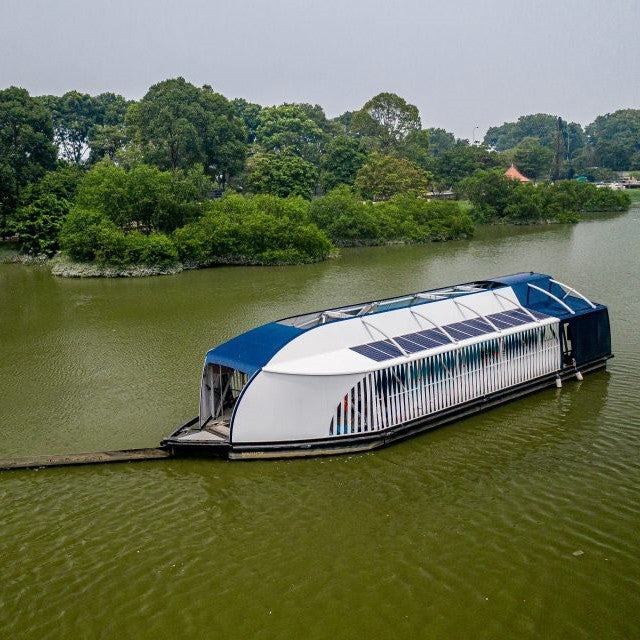Did you know that there’s a swirling vortex of marine debris — roughly three times the size of France — located in the Pacific Ocean? The Great Pacific Garbage Patch, also known as the Pacific Trash Vortex, is the result of a century-long love affair with plastic.
Let’s take a dive into the history, causes and solutions to the world’s biggest plastic problem.


Where is the Great Pacific Garbage Patch located?
Contrary to popular belief, the Great Pacific Garbage Patch isn’t an “island” or a solid mass of plastic — it’s actually a large, swirling vortex of plastic litter, and most of it lies under the surface of the water!
As you can see in this graphic, there are two main garbage patches: the Western Garbage Patch, located near Japan, and the Eastern Garbage Patch, located near the West coast of the United States. Joining the two is the Subtropical Convergence Zone, located in the North Pacific. This zone acts like a highway between the two garbage patches. Yes, you read that right — it’s essentially a marine garbage highway.


Who discovered the Great Pacific Garbage Patch?
It was actually stumbled upon by an oceanographer and boat captain, Charles Moore, in 1997. He was sailing home to California when he noticed an unbelievable amount of litter, which stretched far into the horizon.
“As I gazed from the deck at the surface of what ought to have been a pristine ocean, I was confronted, as far as the eye could see, with the sight of plastic. It seemed unbelievable, but I never found a clear spot. In the week it took to cross the subtropical high, no matter what time of day I looked, plastic debris was floating everywhere: bottles, bottle caps, wrappers, fragments,” he said.


What is the size of the Great Pacific Garbage Patch?
The patch covers around 1.6 million square kilometres, which is roughly twice the size of Texas, or three times the size of France!
However, the fact that it’s a swirling vortex complicates things a bit. The reality is that nobody knows exactly how big it is. That’s because experts recently discovered that around 70% of marine debris actually sinks to the bottom of the ocean.


What’s in the Great Pacific Garbage Patch?
Due to strong, circular ocean currents, it’s likely that once a piece of plastic enters the patch, it’s unlikely to ever escape. Instead of disappearing into the abyss, plastic degrades into tiny pieces called microplastics. This process of ‘photodegradation’, activated by exposure to sunlight, repeats itself until the microplastics cannot be seen by the naked eye.
It’s estimated that there are a whopping 1.1 to 3.6 trillion pieces of plastic in the Great Pacific Garbage Patch.
But, the plastic isn’t just from land-based litter. Discarded fishing nets, or “ghost nets”, make up around 46% of the Great Pacific Garbage Patch. This huge, unspoken problem was recently highlighted by the popular Netflix documentary, Seaspiracy. Here’s everything that we learnt from watching Seaspiracy.


The Impacts of Plastic Pollution
Sadly, more than 90% of dead seabirds have been found with plastic in their gut. Plastic pollution is responsible for the death of around 1 million seabirds per year, and around 100,000 marine mammals and turtles. Abandoned fishing nets are responsible for around 70% of marine entanglements, which leads to the unnecessary suffering and deaths of precious sea turtles, dolphins, seals and fish.
It impacts us, too. It was recently discovered that 386 marine fish species ingest plastic debris, including 210 species that humans eat. Plastic particles, called nanoplastics, are able to move from a fish’s stomach to its muscle tissue, which is the part that we eat. Yuck. Plastic ingestion by fish isn’t uncommon. In fact, it’s widespread and increasing as we dump more plastic into our oceans. Do we really want to be eating fish and plastic?


Solutions for the Great Pacific Garbage Patch
Researchers are predicting the ocean will contain more plastic than fish in weight by 2050. It’s clear that we need to do something about this, but what’s the most realistic solution?
Unfortunately, it could take a very long time to actually clean up the Great Pacific Garbage Patch. According to the NOAA’s Marine Debris Program, it would take 67 ships one whole year to clean up less than 1% of the North Pacific Ocean.
But, it’s not all doom and gloom. There are some fantastic companies out there that are creating innovative technologies to deal with the crisis! The Ocean Cleanup, for example, aims to clean up 90% of floating plastic pollution using advanced technologies.


How The Ocean Cleanup Does This
They’re tackling the main source of marine debris: rivers. Their research found that 1,000 rivers are responsible for 80% of marine pollution, so they’re stopping the source of marine pollution in its tracks with ‘The Interceptor’. The Interceptor is a boat-like device that draws river pollution into its conveyer belt and prevents it from reaching the ocean! The Interceptor can extract 50,000 kilograms of plastic per day, and work 24/7. Pretty cool! They’ve also created a plastic capture system to extract existing plastic from the ocean. With both of these solutions, plus a hefty reduction of single-use plastics, it’s expected that The Ocean Cleanup projects could remove 90% of ocean plastic by 2040.
The main thing we must do is stop plastic from entering the marine vortex in the first place, stop the practice of abandoning fishing nets, and begin to clean up the existing plastic in our oceans.
Curious about marine life and plastic pollution? Head to The Eco Hub for more interesting blogs!
What We Learned From Watching Seaspiracy

